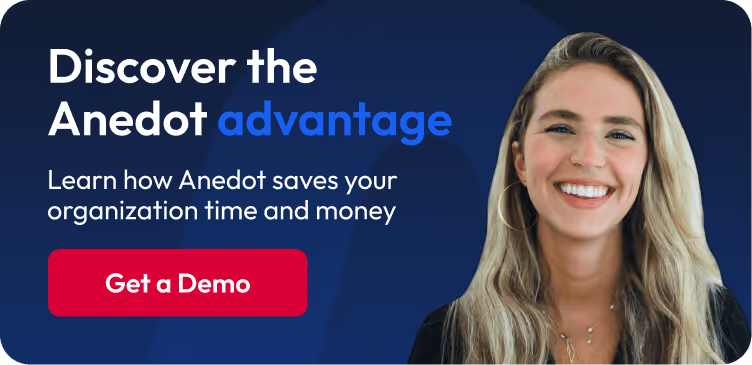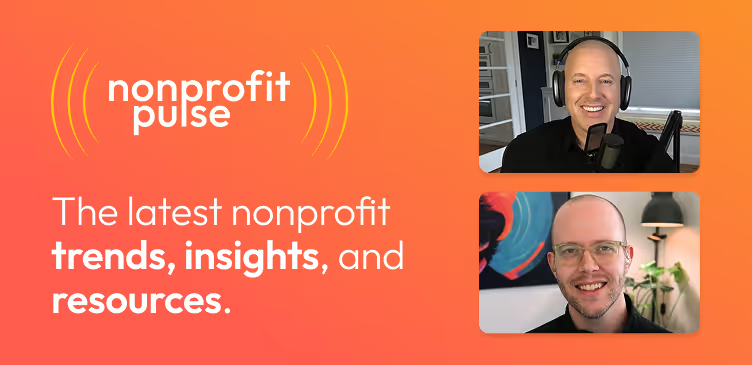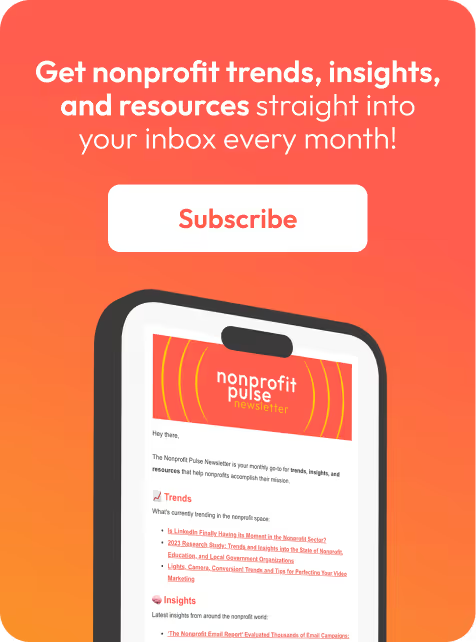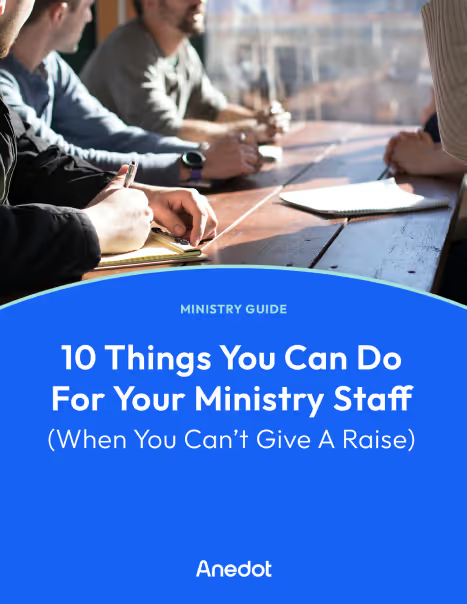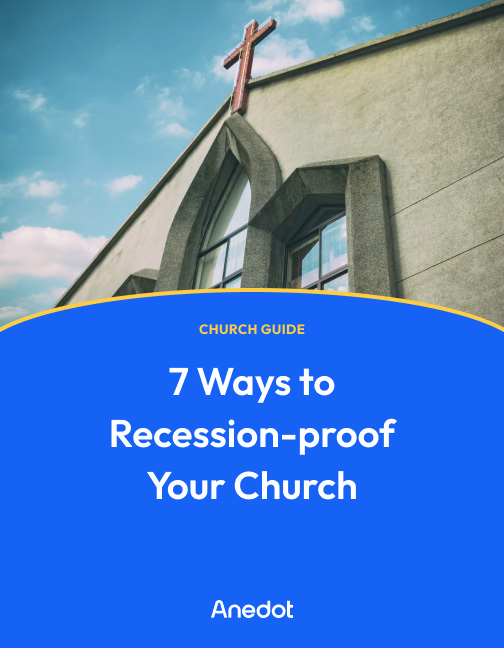Podcast episode transcript ↓
Josh:
You may think of nonprofit finance as an area of your organization that is largely status quo. Set it and forget it.
But with economic shifts, evolving regulations, and rapidly growing technology, nonprofit finance is no longer just about balancing the books.
It's about strategic planning, sustainability, and making every dollar count toward your mission.
I'm Josh with Anedot and welcome to Nonprofit Pulse, where we explore trends, insights, and resources to help nonprofits accomplish their mission.
On this episode, we're joined by Stephanie Skryzowski on the topic of current trends and best practices in nonprofit finance.
For more than a decade, Stephanie has worked inside and outside of nonprofits bringing expertise and leadership in nonprofit finance.
She is the CEO of 100 Degrees Consulting where her team provides financial strategy and bookkeeping services to nonprofits around the globe.
Hey Stephanie, thanks so much for joining us on Nonprofit Pulse.
Stephanie:
Thanks for having me Josh. I'm excited to chat with you today.
Key indicators for assessing nonprofit finance health

Josh:
Yeah. So today we're talking about nonprofit finance and really best practices and trends, current trends going on in the nonprofit finance world.
So just kicking us off, could you start by sharing maybe some key indicators that are crucial for assessing a nonprofit’s financial health and how these have maybe shifted over the years?
Stephanie:
Yes. So I love that we're talking about this because I think that looking at financial metrics is so important for every nonprofit, and we're not doing it often enough.
But so some key indicators that we are always looking at with the organizations that we work with are first and foremost, cash on hand.
How many months of cash on hand do you have? Meaning how many months could you operate at your current level if not another dollar came in the door?
And while it's unlikely that not another dollar will come in the door, I think we all saw it in March of 2020, you know how actually realistic that that possibility could have been.
And so looking at months of cash on hand is huge.
Looking at profitability is really important as well. And what that means is basically what percentage of revenue is left over after all expenses go out the door?
And I know we’re nonprofits and so it's not like we're talking about profitability in terms of like money that's going into somebody's pocket, right?
But we can't continuously operate a healthy, thriving nonprofit organization if we have no money left at the end of the year. Right?
We need that to build our cash reserve to have some cushion for a rainy day or for strategic growth. And so looking at profitability, not only of the entire organization, but also by programs, by departments looking at profitability there is super important.
And the third thing that I would say is probably revenue diversity.
So making sure that we don't have all of our revenue eggs in one basket where we're relying on one particular funder or even one particular source of funding for a significant portion of our revenue.
I worked with an organization that was receiving about 75% of their revenue from one government source.
And years upon years of this happening and finally that government, the agency was like, listen, you can't rely on us for three quarters of your revenue anymore.
We're basically cutting you off. And so they were forced to really think quickly about like, oh boy, how are we going to make up this difference?
And so I think that that one especially has shifted over recent years as funders, not only government agencies, but also foundations and individual donors are changing their funding priorities.
They're changing the way that they're giving money. And so making sure that, you know, this one foundation that's giving you 80% of your revenue is not next to change.
And now you're left scrambling trying to make that up.
So I think revenue diversity is a huge one.
Strategies for navigating economic uncertainty in nonprofit finance

Josh:
Yeah. So you kinda mentioned the ups and downs of the economy.
What strategies have you seen nonprofits finding most effective to navigate these current ups and downs that we're seeing?
And potentially there could be to your point, there could be some government cuts in the next five years as our national debt seems to be out of control.
There's going to be some spending cuts at some point which may impact nonprofits, NGOs.
So what strategies out there are you seeing that's most effective to really navigate all the uncertainty?
Stephanie:
Yeah. So a few different things are what we're focusing on.
First is a strong focus on cash.
Really making sure we are not living paycheck to paycheck or donation to donation and taking efforts and taking actions now to build up a 3 to 6 month cash reserve, preferably like six months.
And what that means is like, well, let's have a surplus budget this year so we can take that surplus and put it into a cash reserve.
So having a really, really strong eye on cash.
The second thing I would say is really thinking about long term forecasting and not looking at just this 12 month budget, but looking 3 to 5 years into the future, not just with a strategic plan, but with a financial forecast that aligns with your strategic plan.
So, yeah, maybe you have an idea of how you're going to raise your $2 million this year, but what about next year?
What about the year after that? So having long range financial forecasting, because what that does is it allows you to see around the corners of your Excel crystal ball so that you can make decisions now, if you're seeing like, we're going to have a big gap in like 18 months.
Great. Well, let's make decisions now so that that gap in 18 months no longer exists.
So I think that for sure, long term forecasting and then just that ability to stay flexible and to know that things are going to change.
And when you have a strong financial foundation, you have this forecast, you're able to see around the corner that's really going to help weather a lot of you know, a lot of these uncertainties and storms.
And the last thing I'll say only because I've seen a couple organizations that we work with go through it recently is to really be mindful of what fixed costs and resources you have tied to a particular grant.
And so I know one organization had a really large government grant that was funding a significant portion of their core staff.
So there is program staff that were specifically for the grant but then they had core staff that were largely funded by this federal program.
And without very much warning, the federal agency was like, yeah, we're not doing this anymore.
And so now they're left scrambling, trying to figure out, well, how am I going to fund this very significant person to our entire operations?
Are we using unrestricted dollars? We don't have this grant money anymore.
So just being very mindful of what you have attached to grants as they're really not guaranteed.
Nonprofit finance software recommendations

Josh:
Yeah, that's so important.
And, you know, just thinking about technology, kind of switching gears to technology, you know, how is technology currently shaping the management of nonprofits finances?
There's been a lot of new tools in the past five, ten years. Any tools that you would recommend or that you use with your clients?
Stephanie:
Yeah. So we prefer QuickBooks Online for accounting software because largely because it connects to so much.
There are so many CRMs that it connects to in many different ways. There's platforms for accounts payable and accounts receivable and payroll that it connects to.
And so my one thing was like just making sure everything talks to each other and making sure that you're choosing software platforms that talk to other ones.
That is going to just be such a more efficient use of your resources so that you're not spending human time printing paper checks and driving them across town to have your board chair sign them and, you know, to pay your electric bill of your office. Right?
Like there's a way more efficient way that we can do that using technology. And so just being comfortable with that and then also ensuring that everything is talking to each other is huge.
The other thing I would say related to finance that, again, I don't see a lot of nonprofits using is some sort of project management software for nonprofits.
And I'm pretty neutral in terms of like which one is best because I think you can kind of make any project management software work for you, like Trello or Asana or Monday.com or whatever it might be.
But using a system for your finance routine, so that on a monthly basis you're not forgetting what you need to do to close the books.
Or maybe for your fundraising process. So you're not forgetting to acknowledge a donor’s gift or whatever it might be.
Using a project management software to track these processes and these routines I think is huge to closing the books faster, closing them more accurately, having better financial data at your fingertips to make strategic decisions.
Josh:
Yeah, I love that.
And, you know, project management software is so helpful for nonprofits to also look back and say, okay, here's our new initiative that we birthed from idea to implementation and now success.
And so it's really helpful. And I think most nonprofits are already using one, but hopefully, hopefully those who aren't can lean in or those who are using maybe need to reassess the tools and see maybe there's a better project management software out there for us.
Innovative approaches to diversify fundraising revenue

Josh:
Okay. So thinking about funding diversity, we know it's crucial for sustainability.
Could you discuss maybe some innovative approaches that nonprofits are using to diversify their funding sources?
We just had a guest on Stephanie Schwartz for an episode that's coming out on major gifts and super excited about that episode getting out.
But that was kind of one of the points was there's a lot of nonprofits who are either over indexed on major gifts, like you mentioned earlier, or under indexed on major gifts and aren’t doing enough.
So yeah, any innovative approaches you're seeing out there to diversify fundraising revenue?
Stephanie:
Yeah. So I think the first thing is understanding what your fundraising portfolio or what your revenue portfolio looks like right now, because often it feels like we have this feeling that like one particular area is more significant than others.
But when compared to the whole, it's like, actually that's not really a huge percentage.
I think the other piece that's important to note is your effort versus the impact.
And so one thing I've seen a lot and I'm going to share a good example in a second. But one thing I've seen a lot is this, you know, organizations are like, we have to have this gala event.
We've always had the event. It's just so important to us. But when you factor in the net income, right, after the revenue, after all of the expenses and not even considering people's time, you're making like $20,000.
Well wouldn't all of that effort have been much better served going towards something that could perhaps generate a $100,000 gift or a $200,000 grant or something?
So being mindful of that impact and effort I think is super important.
But one thing that I have seen that's really interesting is most of the organizations that that I work with, their revenue is coming from individuals, foundations, maybe some corporate and maybe some government.
So largely fundraising and grants. But one thing I've seen a lot of organizations doing is some sort of fee for service model.
And so they've been really looking at the different pieces of their organization and figuring out, okay, is there something in here that we could charge for?
I was just talking to an organization this morning that they have they have education and they have some education, I think, around how to replicate the model of the work that they do.
And so their fee for service model that they're thinking through is, okay, well, how can we charge for this? Like we have IP, intellectual property, that is really valuable and that can help another organization to kind of replicate our model of nonprofit.
Let's charge for that. And there's another revenue stream.
And so I thought that was really interesting to again, sort of find something that you're already doing and figure out how to charge for it and basically create another revenue stream.
Best practices to ensure compliance and maintain transparency

Josh:
That's so cool. That's so cool. Thanks for sharing that.
So, when I think about nonprofit finance, I think initially regulations. I think of, you know, all of the hurdles, every dotted I, every cross T.
So just thinking about regulations, you know, in the context of regulations and really evolving regulations, what best practices, would you encourage or share with us to ensure compliance and maintain transparency when it comes to donors and internal stakeholders?
Stephanie:
Yeah. So there is a lot you're right. I feel like nonprofits are you know, there's a lot of scrutiny and a lot of looking at nonprofit organizations, I mean, our tax returns are public information, so anybody can comb through that.
I would say it's sort of internally really making sure that you have documented processes and segregation of duties.
And that's especially tricky at small organizations. But even more important. And so what that means, segregation of duties is essentially making sure that more than one person is involved in every process so that there's controls. Right?
So, for example, we wouldn't want one person by themselves to be driving to the post office, picking up the mail, opening the mail, processing the checks, putting the checks into the donor database, depositing the checks at the bank, putting the checks into the accounting system, and then like reporting on all of that. Right?
Because there is room in that process for fraud and for misappropriation of that documentation or of that money.
And so having segregation of duties means that somebody else is involved in that process. It's checks and balances.
And that's really hard for small organizations because, you know, we get the pushback a lot. Well, there's only one person in the office, how am I ever supposed to do this with somebody?
Am I supposed to make this up or my imaginary friends? Like, there's always a way. And so it might mean a little bit of creativity, but having that segregation of duties internally is so important.
And then I really like this question, especially around the transparency piece, because there was a study published by, I forgot the name of, it was like the Journal of Auditing and Accountancy or something like that, that basically stated that or found that:
Organizations that were more transparent when it comes to your financial information received 53% more in contributions the following year than organizations that were not transparent.
And so the study specifically looked at organization’s profiles on GuideStar and the organizations that were, like fully transparent and met all of GuideStar’s like platinum requirements for sharing all this information, they received 53% more in contributions the following year.
And so transparency is huge. And I think that I know that there are ways to be really financially transparent and share your numbers and share the story that your numbers are telling with your donors, with your stakeholders.
And that is only going to benefit your organization. It builds trust, it builds confidence.
And even if the picture, your financial picture is like not so rosy, that could only inspire them to help you even more. Right?
If you're like, everything's great. We have like a bajillion dollars of cash in the bank, well, maybe they wouldn't be inclined to help.
But if you're like, listen, we're trying to build up a three months, three months cash reserve because we have this big vision and we want you to be a part of it. Well, they may be more inclined to donate.
So I think transparency is huge. And then also when it comes to compliance, like filing your 990 on time, just please do that.
We have a lot of organizations that come to us, they're like, I'm two years behind on my 990. We’re like, oh my goodness, we need to get this done ASAP. So yeah.
So anyway, those are my thoughts on compliance and organizational transparency, but I could talk a lot about transparency because I think it's so, so important in our sector, even beyond what is required of nonprofits.
Josh:
Yeah, that's so important.
And when I think about, you know, donors showing up to a nonprofit's website or getting direct mail, you know, I think a lot of nonprofit leaders view those donors coming to their organization and looking at them as a neutral state like, okay, what's this organization about?
You know, do I want to get involved? What's their impact?
When I think most of the time donors are coming with a sense of skepticism and there's a gap there.
There's a hurdle to overcome and building trust right off the bat.
And by having financial transparency, whether it's in your annual report, your impact statements, your 990s, all those things are so easy to do and to offer and to put up front and say hey before you even dive into our programs very deep here's our financials.
This is what we're about, here's how we're stewarding the money that we've received.
What does success look like in nonprofit financial leadership and governance?

Josh:
So thinking about financial leadership and governance.
How do you view the role of financial leadership and governance in a nonprofit success?
There's so much that goes into the success of a nonprofit, and I think very often we overlook the financial leadership and governance piece.
So what advice would you give to organizations looking to strengthen these areas?
Stephanie:
Yeah, I mean, I'm definitely biased, but I can't say enough about the importance of a strong CFO, Chief Financial Officer.
And a lot of organizations don't have one. And frankly, that's why I started my company was because I was seeing these, you know, small to midsize nonprofits and not having a senior finance person.
And so what that meant with not having a senior finance person, sure, maybe they have a bookkeeper or they've got somebody filing their 990. They've got somebody handling QuickBooks. But that's about it.
And so the gap then is that these organizations don't have that strategic or financial insight. They don't have that Excel crystal ball that helps them see around the corner and figure out, you know, today, where our gaps are going to be in six months and solve those problems.
I think the role of finance leaders in nonprofits cannot be emphasized enough, not only when it comes to forecasting, but also thinking about making decisions.
You know, nonprofits, executive director or maybe the program team or development like we have these big visions.
But what we need to attach to that is the financial picture as well, the financial reality, because I've seen a lot of organizations create these beautiful strategic plans that are like going to accomplish the world in the next five years.
And it's amazing. And we're all so excited, the board is fired up after their three day strategic planning retreat. But the missing piece then is that there is not a financial forecast or a budget tied to that.
And so we're like get six months down the road and are like, okay, well, we're ready to go for a strategic plan objective number two. Oh wait, we don't have any budget for that.
Like, we didn't include it in the budget. And so I think that financial leadership, having a CFO is that bridge between our strategic plan and reality.
Honestly, you need that financial vision as well. And so that doesn't necessarily mean a full time CFO, because I think a lot of organizations, frankly, don't need a full time CFO.
So what about a fractional CFO? Having somebody at least part time, you know, on that sort of fractional basis that can provide that level of support.
But I think that's huge. And I think it's something that all organizations, especially those that are growing, that have big goals and big visions and big plans, absolutely need to take the strategic plan into reality.
Really mapping out a financial plan and roadmap to get you there.
Emerging trends in nonprofit finance

Josh:
Love that. So our mission at Nonprofit Pulse is to explore trends, insights, and resources that help nonprofits accomplish their mission.
So thinking about nonprofit trends, what emerging trends do you see in nonprofit finance and how can organizations prepare themselves to really meet these future challenges and adversely opportunities?
Stephanie:
Yeah, that's a great question. So I am seeing actually, I will say over the last probably four years and I would venture a guess that COVID probably has something to do with it.
The trends that I’m seeing are that related to leadership and staffing is that organizations are definitely more open to like remote and fractional finance teams.
So realizing the importance of having somebody on board that is actively looking at the finances and is doing it from that strategic point of view, they've always known the importance of having a bookkeeper, right?
Like we need to have our numbers managed every single month. But sort of being open to this sort of like remote fractional finance team, I think is one piece.
And then I don't know if I would call this a trend, but I am seeing more organizations being open to technology solutions than they have before.
Largely what we saw four years ago was, oh well, this is how we've always done it. Yeah, we've always cut paper checks, why do we have to be it, why do we need to do anything differently?
Yeah, I've always had stacks of paper to the side of my desk. Why do we have to do anything different? And then COVID changed all of us.
But we’re seeing more and more people are interested in new technology, new platforms, new nonprofit software, which I think is huge. And before it kind of felt like, we really have to convince people.
I think people are more willing to try new things when it comes to technology. So I think that is, I think that's big.
And then I guess, you know, just being flexible. Again, I don't know if this is really a trend, but just seeing more organizations being flexible and nimble and being more creative when it comes to finding solutions to problems.
And again, I think a lot of this really came out of COVID but stuck with us because we had to be agile and nimble then.
But now it's like, okay, well how can we try something new? And I am always looking for organizations that are doing things creatively and approaching things with a new innovative perspective.
And I'm seeing that more and more now.
Josh:
Yeah, I love that answer and it just makes me think of how the pandemic really kind of kicked the door down for where nonprofit leaders to embrace change, to kind of put aside their fear of change and start doing new things.
You know, from remote like, as you mentioned, from remote staff, to fractional CFOs, fractional marketing leaders, all the way to technology and saying, you know what, we do need to try more technology.
The paper checks, we missed them. They were so, so good. And they you know, they felt, they felt like, you know, our favorite coat, our favorite sweater, they were just so comfortable.
But actually it was fine, you know, abandoning paper checks. So that's really cool to see.
We certainly see it at Anedot with more and more nonprofits signing up with us.
There's definitely still that push coming out of the pandemic of okay change is okay. Let's catch up with the for-profit sector in many ways.
Stephanie:
Yes yes. 100% agree with you. Yeah.
Closing thoughts

Josh:
All right, Stephanie, so last question.
If you were on stage in front of 1,000 nonprofit leaders and you could share one thing, one takeaway, one sentence regarding nonprofit finance, what would you say?
Stephanie:
Yes, I have a hard time narrowing this down to one sentence. I'm like, can I have 20 minutes?
Josh:
That’s what makes it so fun.
Stephanie:
So I will say that managing your nonprofit’s numbers is so vitally important to everything that you do within your organization and frankly, is like the key to your sustainability.
And it's doable by anybody. Even if you hate numbers, it doesn't have to be scary. That was a kind of a run on sentence. I would, you know, clean it up a little bit.
But that's that's the gist of it.
Nonprofit numbers do not have to be scary. Anybody can do it. And everybody should do it.
Josh:
Love it. Love it. That's helpful. Awesome. Stephanie, thanks so much for coming on the podcast.
And enlightening us about these nonprofit finance areas because, you know, honestly, I'd never read about it.
You're our first nonprofit finance guest, so super excited to get this out to our audience, and I know they're going to find it valuable and helpful.
Stephanie:
Awesome. Yeah. Thank you so much for having me, Josh. It was great to chat with you.
Josh:
Thank you.
Hey, thanks for listening.
If you enjoyed this conversation, please share or leave us a rating and review wherever you listen to podcasts.
Also, head on over to Nonprofitpulse.com to sign up for our monthly newsletter, as well as check out all the links and resources in the show notes. We’ll see you next time.
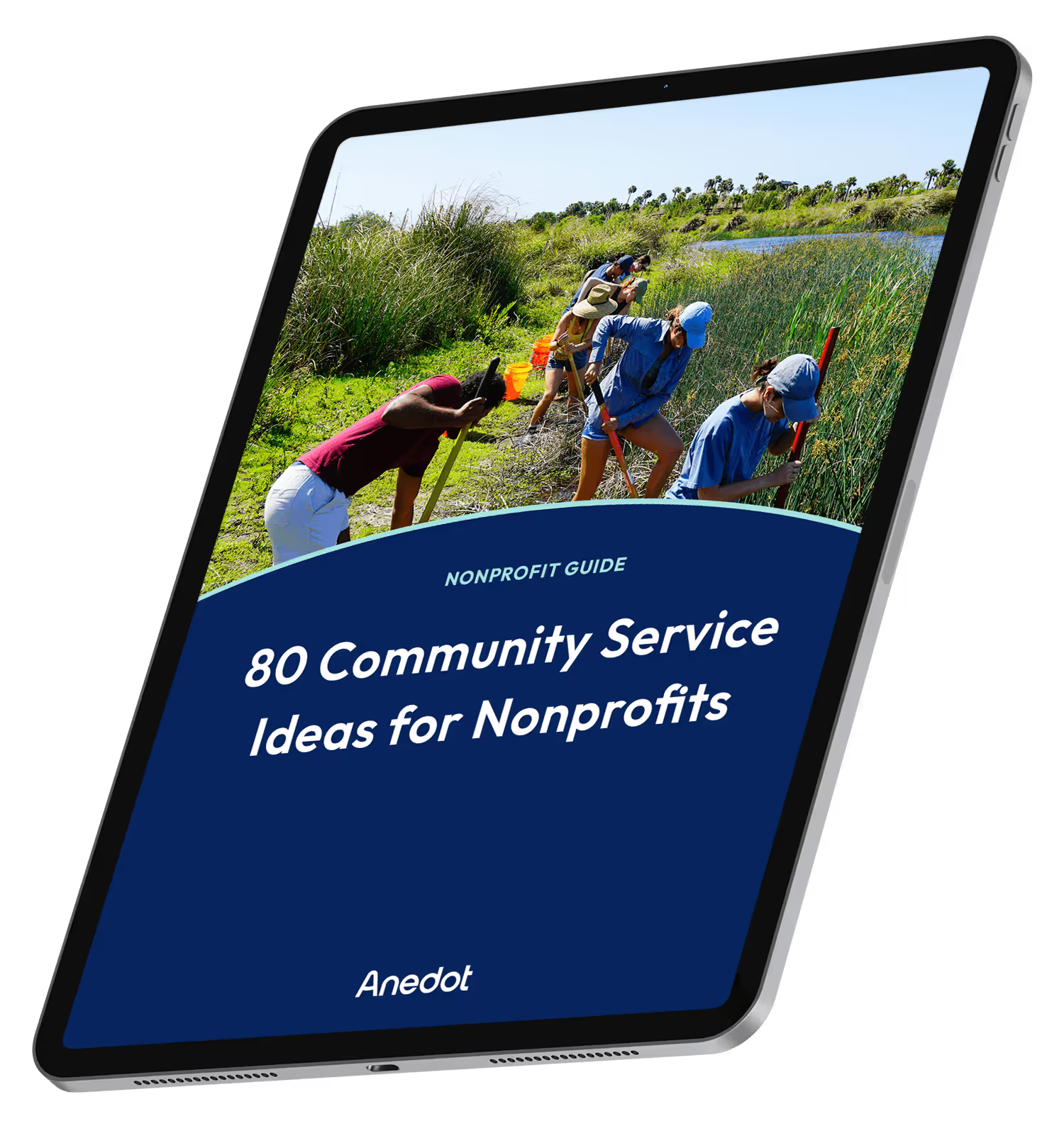
80 Community Service Ideas for Nonprofits
